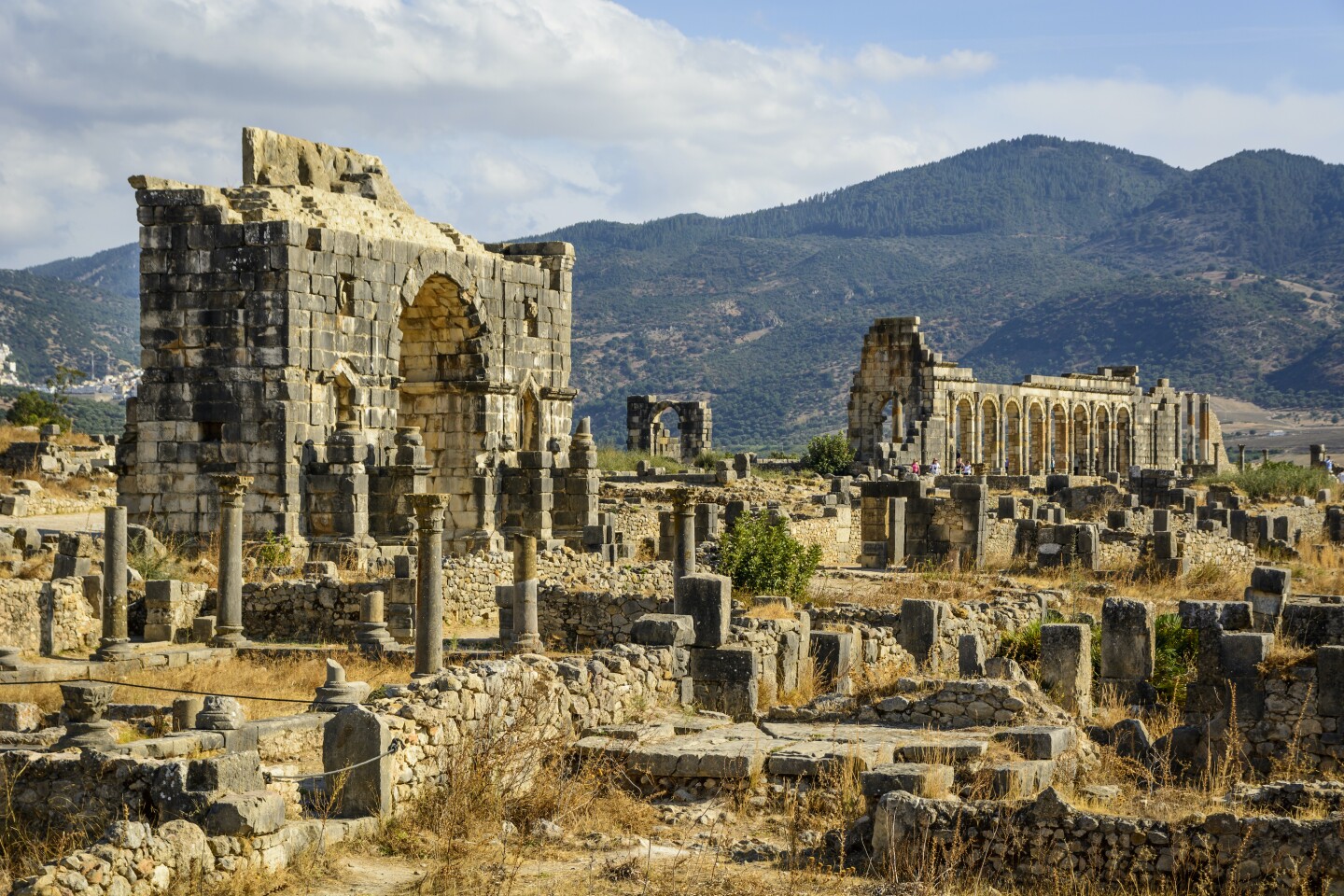Throughout history, civilizations have risen and fallen, leaving behind remnants that continue to intrigue and mystify us. These ancient ruins, scattered across the globe, offer glimpses into cultures long gone and stories yet to be fully understood. As we journey through time and space, let’s uncover some of the most enigmatic archaeological sites that beckon explorers and historians alike.
1. Machu Picchu, Peru: The Lost Incan Citadel
Perched high in the Andes Mountains, Machu Picchu remains one of the most iconic and mysterious archaeological sites in the world. Believed to have been built in the 15th century by the Inca emperor Pachacuti, this “Lost City of the Incas” was abandoned in the 16th century during the Spanish Conquest and remained hidden from the outside world until its rediscovery in 1911.
Despite extensive research, many questions remain. The exact purpose of Machu Picchu—whether it served as a royal estate, a religious site, or a military outpost—continues to be debated. The precision with which the stones were cut and assembled, without mortar, showcases the advanced engineering skills of the Incas. The site’s alignment with astronomical events, such as the solstices, further adds to its mystique.
2. Stonehenge, England: The Celestial Enigma
Located on Salisbury Plain, Stonehenge is a prehistoric monument that has captivated archaeologists and visitors for centuries. Comprising a ring of standing stones, each weighing several tons, the site dates back to around 3000 BCE.
The purpose of Stonehenge remains one of history’s great mysteries. Some theories suggest it was a temple for ancient sun worship, while others propose it served as an astronomical observatory or a burial ground. Recent discoveries, including the identification of nearby settlements and burial mounds, have provided new insights but have yet to offer definitive answers.
3. Petra, Jordan: The Rose City of the Nabataeans
Carved into the rose-red cliffs of southern Jordan, Petra was the thriving capital of the Nabataean Kingdom in the 4th century BCE. Known for its rock-cut architecture and water conduit system, Petra became a major trading hub due to its strategic location along ancient caravan routes.
In a remarkable discovery, a joint US-Jordanian archaeological team unearthed a 2,000-year-old tomb beneath Petra’s famous Treasury. The tomb contained 12 well-preserved skeletons believed to be of high-status individuals, along with hundreds of bronze, iron, and ceramic artifacts. This find sheds light on the Nabataeans, an early society known for their multicultural trading community .
4. Easter Island, Chile: The Moai Statues and Their Builders
Easter Island, or Rapa Nui, is renowned for its nearly 900 monumental statues known as moai. These statues, carved between 1400 and 1650 CE, represent ancestral figures and were placed on stone platforms called ahu.
The methods used to transport and erect these massive statues remain a subject of debate. Some researchers believe the statues were “walked” into place using coordinated movements, while others suggest they were rolled or dragged. The societal collapse that led to the abandonment of the moai construction is also a topic of ongoing research, with theories ranging from resource depletion to internal conflict.
5. Chichen Itza, Mexico: The Mayan Metropolis
Once a thriving city-state on the Yucatán Peninsula, Chichen Itza was a major center of the ancient Maya civilization from the 7th to the 10th century CE. The site is famous for its pyramid, El Castillo, which is aligned with the sun during the equinoxes, creating a shadow that resembles a serpent descending the steps.
Chichen Itza’s decline remains a mystery. While some scholars attribute it to internal strife or environmental factors, others propose that it was a deliberate abandonment. The site’s advanced knowledge of astronomy and mathematics, as evidenced by the construction of the observatory known as El Caracol, continues to fascinate researchers.
6. Angkor Wat, Cambodia: The Temple City of the Khmer Empire
Angkor Wat, the largest religious monument in the world, was originally constructed in the early 12th century as a Hindu temple dedicated to the god Vishnu. Over time, it transitioned into a Buddhist temple and remains a significant pilgrimage site.
The scale and complexity of Angkor Wat’s construction, with its intricate bas-reliefs and vast moat, reflect the Khmer Empire’s architectural prowess. However, the reasons behind the empire’s decline and the eventual abandonment of Angkor Wat are still debated. Factors such as climate change, resource depletion, and invasions have been suggested, but no single cause has been definitively identified.
7. Teotihuacan, Mexico: The City of the Gods
Teotihuacan, located near Mexico City, was one of the largest cities in the ancient world, with a population estimated at over 100,000 at its peak. The city’s layout, featuring wide avenues and massive pyramids, suggests a high degree of urban planning.
The identity of Teotihuacan’s rulers remains unknown, as no inscriptions or records have been found to identify them. The city’s sudden decline around the 7th century CE, marked by the burning of temples and the abandonment of the city, adds to its mystery. The reasons behind this collapse are still a subject of research and debate.
8. Göbekli Tepe, Turkey: The World’s Oldest Temple Complex
Göbekli Tepe, located in southeastern Turkey, is considered the world’s oldest known temple complex, dating back to the 10th millennium BCE. The site consists of massive stone pillars arranged in circular formations, featuring intricate carvings of animals and abstract symbols.
The purpose of Göbekli Tepe remains unclear. Some archaeologists suggest it was a sanctuary for ritualistic practices, while others propose it served as a social gathering place. The site’s construction predates the advent of agriculture, challenging previous assumptions about the relationship between religious practices and settled life.
9. Nan Madol, Micronesia: The Venice of the Pacific
Nan Madol, located on the island of Pohnpei in the Federated States of Micronesia, is an ancient city built on a series of artificial islets connected by a network of canals. Constructed between the 8th and 12th centuries CE, the city served as the ceremonial center of the Saudeleur dynasty.
The construction techniques used to build Nan Madol, involving massive basalt stones transported from distant quarries, remain a mystery. The purpose of the city, whether it was a political center, religious site, or both, is still debated among scholars .
10. Leptis Magna, Libya: The Roman Jewel of North Africa
Leptis Magna, located in present-day Libya, was a prominent city of the Roman Empire. Established as a Punic settlement before 500 BCE, it flourished under Roman Emperor Septimius Sources Severus, who was born in Leptis Magna and lavished attention and imperial resources on his hometown. The city became a showcase of Roman urban planning, with vast forums, a theater, baths, and an impressive harbor.
Despite its grandeur, Leptis Magna was eventually abandoned. Following the fall of the Western Roman Empire, the city suffered from neglect, sand encroachment from the Sahara, and later invasions. Today, it is one of the best-preserved Roman ruins in the Mediterranean, but political instability in Libya has made it difficult for many to visit. The site remains eerily silent, as though frozen in time—its intricate mosaics and towering arches whispering the lost tales of an empire.
Why Ancient Ruins Still Captivate Us
The ruins left behind by ancient civilizations are more than just crumbling stones and faded relics—they are the DNA of our collective history. Each site offers a tangible connection to the people who once lived, worshipped, ruled, and dreamed in these now-quiet places. They remind us of human ingenuity and curiosity, and they challenge us to ask profound questions about our origins, beliefs, and the cyclical nature of civilizations.
But perhaps the most powerful allure of ancient ruins lies in the mystery. For every inscription deciphered or tomb uncovered, dozens of questions remain unanswered. How were the pyramids of Giza built with such precision? Why did flourishing cities like Teotihuacan and Angkor Wat suddenly collapse? What rituals were held in the stone circles of Göbekli Tepe before recorded history even began?
In an age where information is constantly at our fingertips, the enigmatic silence of ancient ruins provides a rare sense of wonder. They encourage us to dig deeper—not just into the earth, but into ourselves.
Traveling to the Past: A Responsible Approach
While the fascination with ancient ruins grows, so does the need for responsible travel. Many of these sites are vulnerable to erosion, over-tourism, and climate change. Organizations like UNESCO, local governments, and indigenous groups are working tirelessly to preserve these treasures for future generations.
As travelers, we can do our part by:
- Respecting restricted areas and signage.
- Avoiding physical contact with ancient structures.
- Supporting sustainable tourism initiatives and local guides.
- Staying informed about the cultural significance of each site.
By treading lightly, we help ensure that these portals to the past remain open for others to experience and interpret.
Conclusion: Unlocking the Secrets of the Ancient World
Whether buried beneath desert sands or hidden in misty jungles, the world’s most mysterious ancient ruins continue to inspire awe and curiosity. They remind us that there is still so much we don’t know—that the past is not a closed book, but a living story being written with every archaeological find.
As you consider your travel plans for 2025 and beyond, think beyond the usual tourist circuits. From the sacred terraces of Machu Picchu to the shadowy tombs of Petra, these timeless places invite you not only to witness history—but to feel it.
So go ahead. Book the trip. Step through the stone archways. Wander among the whispers of civilizations long gone. The ancient world is waiting—and it still has secrets to share.
Interested in exploring more hidden historical gems? Subscribe to our Travel & Culture newsletter at ZynPress.online for weekly deep-dives, expert tips, and off-the-grid adventures.

